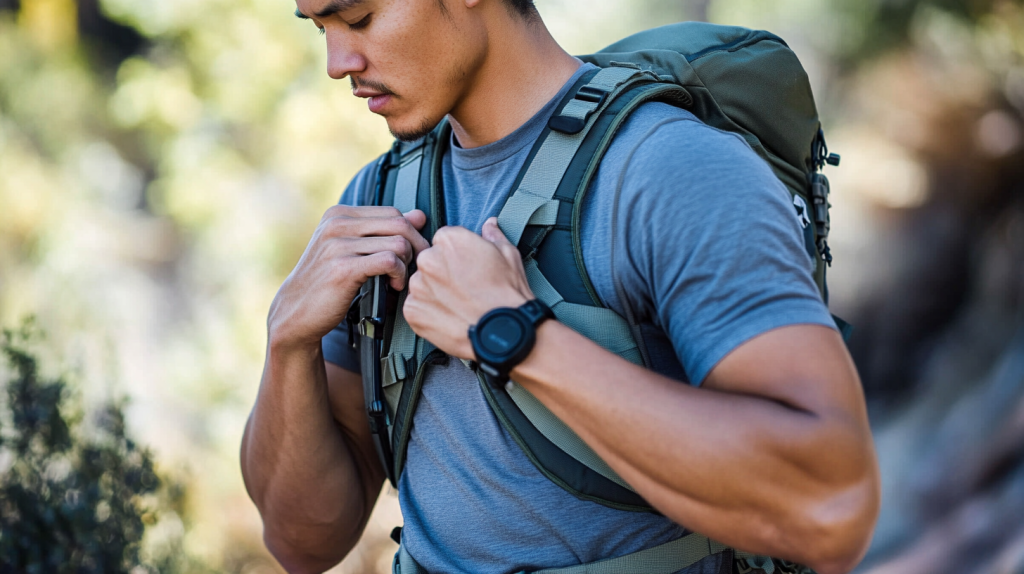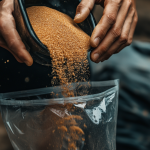When you’re rucking, it’s the little details that can make or break your experience(especially as you add more and more weight). One feature that often flies under the radar but makes a big difference is the chest strap (or sternum strap) on your rucksack. This simple piece of gear is a game-changer when it comes to comfort, stability, and efficiency. Here’s why you want a chest strap on your ruck and how it can make your rucking sessions much smoother.

Stability
The primary role of a chest strap is to keep your shoulder straps from sliding outward. When the straps start to drift toward the edges of your shoulders, your ruck can feel unstable, and you’re left constantly adjusting. This instability can throw off your rhythm, especially if you’re on uneven terrain or moving at a faster pace.
With a properly adjusted chest strap, your ruck stays snug against your body. This helps keep the weight evenly distributed and prevents unnecessary shifting that could slow you down or even cause you to lose balance. I’ve had my fair share of off-trail rucks where loose rocks and inclines tested my footing, and having a chest strap kept everything secure so I could focus on the path ahead instead of wrestling with my gear.
Reducing Shoulder Strain
Without a chest strap, the shoulder straps of your ruck can end up bearing the full brunt of the load. Over time, this can lead to tension in your shoulders, neck, and upper back. A chest strap helps alleviate this by redistributing some of the pressure. It pulls the shoulder straps inward and holds them in place, so they’re not constantly shifting and digging into your shoulders.
During one of my earlier long-distance rucks, I didn’t think much about the lack of a chest strap until my shoulders started to burn after just a few miles. Once I upgraded my ruck to one with a chest strap, it was like night and day. The straps felt lighter on my shoulders, and I could maintain better posture without slouching forward.

Improved Posture
Speaking of posture… when your ruck’s shoulder straps are properly positioned and held in place by a chest strap, you’re able to ruck with better posture. Poor posture—like hunching forward to counterbalance a shifting load—can wear you out faster and even lead to lower back pain. A chest strap pulls the ruck closer to your torso, so it moves with you, not against you.
This not only improves your biomechanics but also makes your movements more efficient. When I use a chest strap, I feel like I can maintain a steady pace for longer, with less effort. It’s a small adjustment that pays off big time, especially on long-distance treks or rucking workouts.
Preventing Chafing
One overlooked benefit of a chest strap is that it helps minimize rubbing and chafing. When your shoulder straps are constantly shifting, they can create friction on your shoulders and collarbones, leading to hot spots or even painful raw skin. A chest strap keeps those shoulder straps in place, so there’s less movement and less chance of irritation.
I learned this lesson the hard way on a hot summer ruck when sweat made my straps shift around even more. By the end of the day, I had raw patches on my collarbones that took a week to heal. After that, my chest strap became a non-negotiable part of my setup.

How to Adjust Your Chest Strap
To get the most out of your chest strap, proper adjustment is key. Here’s what works best for me:
- Positioning: Place the strap just below your collarbone, so it’s not pressing against your throat or restricting your breathing.
- Tightness: It should be snug enough to keep the shoulder straps secure but not so tight that it feels restrictive.
- Adjust as Needed: If you’re tackling hills or changing pace, you might need to tweak the strap’s position to stay comfortable.
Final Thoughts
A chest strap might seem like a small detail, but it can make a huge difference in your overall rucking experience. By improving stability, reducing shoulder strain, and keeping your load secure, it allows you to ruck more comfortably and efficiently. Whether you’re going for a casual stroll or pushing through a grueling event, don’t underestimate the power of this simple feature. Your shoulders will thank you.



